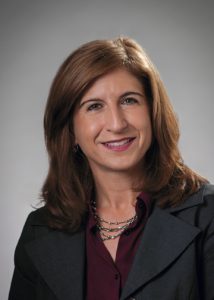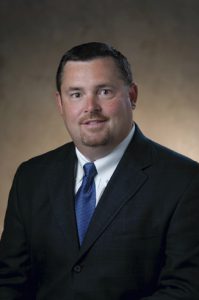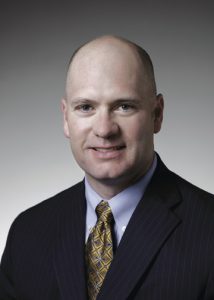Brokers finding opportunities to attract and keep employer business on the books
Self-insurance turns the traditional healthcare reimbursement system upside down by shifting responsibility for a lot of healthcare expenses away from the insurance company and onto employers. Employees in high-deductible health plans can relate. In both HDHPs and self-insured plans, there is a trade-off where one party—the employee or employer—receives a savings in exchange for paying the more predictable healthcare expenses.
The less predictable and financially crippling medical expenses are still covered by insurance in a high-deductible health plan. In a self-insured plan, they can be covered by stop-loss insurance.

—Karin James
Assistant Vice President, Stop-Loss Operations
Sun Life Financial
More than 61% of workers covered by an employer-sponsored health insurance plan are enrolled in a plan that is either fully or partially self-insured, according to the 2016 Kaiser Family Foundation and Health Research & Educational Trust study. For firms under 200 lives, the figure is 13%; over 200 lives, it is 82%.
Robert J. Melillo, head of stop-loss for The Guardian Life Insurance Company of America, says brokers with clients in well-structured self-insurance programs with stop-loss insurance are likely to retain those accounts in a self-insurance program for long periods of time.
“Over the last eight to ten years, the broker community has been building their self-funded knowledge base to better serve the growing market, and we’ve noticed that very few plans that self-fund move back to a fully insured arrangement,” Melillo says. “Therefore, the brokers that have a stronger grip on the self-funded model often hold onto their self-funded clients longer.”
Karin James, assistant vice president, stop-loss operations of Sun Life Financial, says, “Self-funding has always been a viable option for employers looking for more control over benefit plan designs to drive cost savings, in addition to reducing premium tax.”
The Affordable Care Act has provided additional impetus to the growth of self-funding, according to major participants in the stop-loss market. HM Insurance, which has been providing stop-loss coverage for more than 30 years and currently covers 1,426 self-funded plans, says at its website, “Self-funding has become more attractive due to ACA regulations, which have the potential to drive up the cost of fully insured plans through coverage mandates, increased fees, and additional assessments.”
James notes that although “historically, use of self-insurance is more common among larger employers (1,000-plus employee lives), the ACA has brought self-funding to light for smaller employers. We are seeing an interest in self-funding among smaller employers, and we expect this trend to continue, regardless of what happens with the ACA.”
Melillo agrees. “I believe that groups of all sizes that have an interest in managing their healthcare spending and that understand the philosophy of self-funding will continue to self-fund, regardless of any potential changes to the ACA. The benefits of self-funding stand on their own merit.”
James says the key reason for small employers’ interest in self-insurance is the potential for overall savings. “However, given the rising cost of healthcare, especially specialty drugs, it is critical that these employers understand the need for financial protection and talk to their brokers about the provisions and features of stop-loss insurance.”
Her words of caution to self-insured employers are reminiscent of what retirement plan participants learned when their employers converted from defined benefit pensions to 401(k)s or other defined contribution plans: When you take control of your investments and assume risk, you need advice and “guard rails.”
“There is definitely a learning curve,” Melillo says, “when any employer moves from a fully insured arrangement, which typically offers a ‘canned’ program provided by a single carrier, over to a self-funded program that can have multiple service providers including a TPA and a stop-loss carrier.
“I often compare it to going to the restaurant where the entire meal is prepared for you, versus going to the supermarket and buying your ingredients, taking them home to prepare to your liking,” he says.

—Bill Miller
Senior Vice President, Underwriting
HM Insurance Group
The ingredients and the players
The broker must work closely with the plan administrator and the stop-loss insurer to help the self-insured employer meet its healthcare needs within its risk tolerance. Melillo explains what some of those stop-loss ingredients are, and how they can be mixed to suit the needs of an individual employer.
“Our Individual Stop Loss (ISL) caps a plan’s risk exposure at the member level, set at a deductible selected by the employer with the guidance of the broker,” he says. “We offer an Aggregating Specific Deductible option that allows an employer to take on more of the ISL risk for a reduction in premium without increasing the ISL deductible. This option is often selected if the employer believes it will have better-than-expected ISL results for the underwriting year.
“We also offer a Monthly Aggregate Accommodation (MAA) feature with our Aggregate Stop Loss. If the month-to-date aggregate claims exceed the month-to-date aggregate deductible, we will advance the plan the amount above the month-to-date deductible. This is a popular feature with smaller plans that are sensitive to the monthly fluctuations of a self-funded plan.”
James says that for smaller employers moving from a fully insured to a self-insured plan, it is up to the employer working with its broker or consultant to choose the administration that best meets their needs.
“Some employers choose to stay with the health carrier to administer their self-funded plan via an Administrative Services Only (ASO) agreement. Others will choose a TPA to administer their self-funded plan. Many TPAs access national and/or larger regional provider networks, in addition to having flexibility in the development and administration of customized plan designs,” James says.
Bill Miller, senior vice president of underwriting at HM Insurance Group, says, “The employers who work with TPAs have become more focused on claim management, and they rely on TPA and producer recommendations for alternative benefit plan options that help reduce costs and save money. More and more TPAs are switching to a model where the broker places the stop-loss coverage, whereas 10 to 15 years ago, it was mainly the TPA placing that business. So employers are looking to their brokers to bring more cost management measures to the table.”

Head of Stop Loss
The Guardian Life Insurance
Company of America
HM provides cost comparisons and other data to employers that are weighing the decision between self-funding and fully insured coverage. “We also utilize the knowledge base of our sales team to help them decide on the level of risk, the contract options, and other financial alternatives to consider when self-funding with the protection of HM stop-loss,” says Miller.
Melillo at Guardian notes, “TPAs, ASO (Administrative Services Only) carriers, and health plans are all key stakeholders in the execution of a self-funded plan, and their reporting capabilities are critical to the success of the stop-loss carrier. They often direct many of the managed care services—such as network, specialty services, wellness, and prescription benefit managers. Therefore, we look for TPAs that have access to innovative services, effective networks and comprehensive services.”
At Sun Life, Michael Hoefler, vice president, distribution, stop-loss, says, “We’ve recognized the need for TPAs and brokers to be more consultative with clients in light of factors like the ACA, evolving medical insurance markets, and changing networks. As a result, we’ve focused heavily on gathering data and providing useful insights to our broker and TPA partners.”
These include a benchmark tool that shows prospective clients how their peers with similar workforce demographics in similar industries and geographic areas have designed their stop-loss coverage.
Attacking the big costs
Medical stop-loss carriers provide a clear and sometimes scary view of catastrophic health cost trends. HM Insurance Group’s stop-loss claims over $1 million have grown by an annual average of 40% over the past 10 years. Between 2012 and 2016, its stop-loss claims incidence per 100,000 employees increased 67% at the $1.5 million level.
Sun Life ranks first in stop-loss premium among independent stop-loss carriers, according to MyHealthGuide News. Its most recent annual stop-loss catastrophic claim report showed that just 1.7% of claimants produced claims over $1 million, but these claimants accounted for 18.5% of Sun Life’s overall stop-loss claims reimbursements.

Vice President, Distribution, Stop Loss
Sun Life Financial
For both HM and Sun Life, cancer was the leading catastrophic claim condition.
The class of drugs known as specialty pharmaceuticals is a critical cost concern for stop-loss insurers. HM identifies these drugs (also known as biologics) as those used to treat chronic and/or rare disabilities and/or life-threatening diseases. A report from the IMS Institute for Healthcare Informatics shows that more than two-thirds of the overall spending growth for medicines in the United States in 2015 was attributable to specialty drugs.
“We are closely watching the cost of specialty drugs,” says Miller. “We work with TPAs to include tiering and require pre-authorizations in their underlying plan documents; we intercede in cases where our staff and external vendors are able to identify lower cost alternatives; and we seek additional data that will help us monitor the Rx risk.”
Medical cost containment will be a continuing challenge in the decades ahead. Self-insured employers have control over detailed claim data on their employees. More than names and numbers on a spreadsheet, this data represents people they know and care about. These self-insured employers, with the help of their brokers and program administrators, can play a major role in making the healthcare reimbursement system work.
For more information:
The Guardian Life Insurance Company of America
www.guardianlife.com
HM Insurance Group
www.hmig.com
Sun Life Financial
www.sunlife.com
The author:
Thomas A. McCoy, CLU, retired in 2013 as editor-in-chief of Rough Notes magazine.





